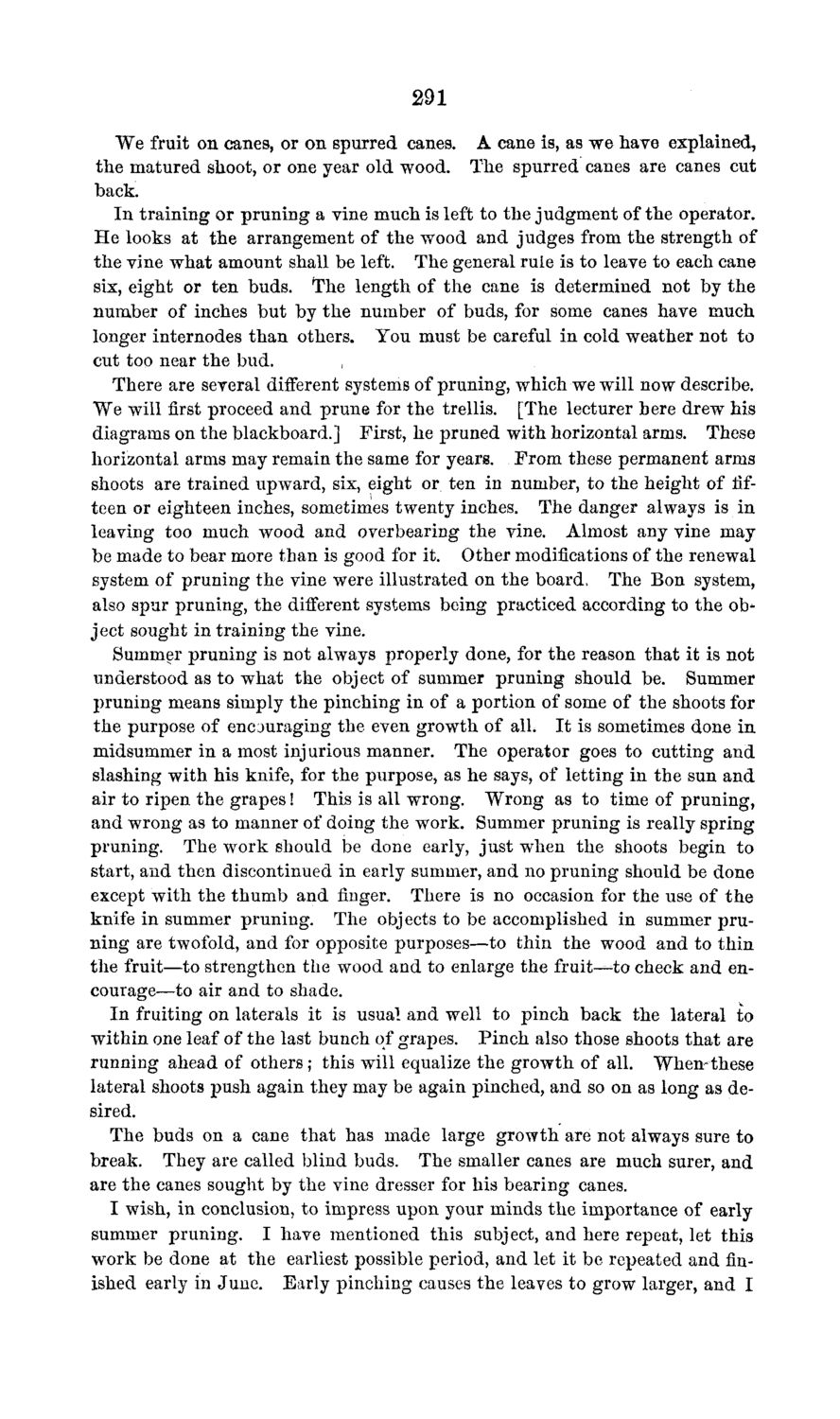| |
| |
Caption: Board of Trustees Minutes - 1869
This is a reduced-resolution page image for fast online browsing.

EXTRACTED TEXT FROM PAGE:
291 We fruit on canes, or on spurred canes. A cane is, as we have explained, the matured shoot, or one year old wood. The spurred canes are canes cut back. In training or pruning a vine much is left to the judgment of the operator. He looks at the arrangement of the wood and judges from the strength of the vine what amount shall be left. The general rule is to leave to each cane six, eight or ten buds. The length of the cane is determined not by the number of inches but by the number of buds, for some canes have much longer internodes than others. You must be careful in cold weather not to cut too near the bud. There are several different systems of pruning, which we will now describe. We will first proceed and prune for the trellis. [The lecturer here drew his diagrams on the blackboard.] First, he pruned with horizontal arms. These horizontal arms may remain the same for years. From these permanent arms shoots are trained upward, six, eight or ten in number, to the height of fifteen or eighteen inches, sometimes twenty inches. The danger always is in leaving too much wood and overbearing the vine. Almost any vine may be made to bear more than is good for it. Other modifications of the renewal system of pruning the vine were illustrated on the board, The Bon system, also spur pruning, the different systems being practiced according to the ob* ject sought in training the vine. Summer pruning is not always properly done, for the reason that it is not understood as to what the object of summer pruning should be. Summer pruning means simply the pinching in of a portion of some of the shoots for the purpose of encouraging the even growth of all. It is sometimes done in midsummer in a most injurious manner. The operator goes to cutting and slashing with his knife, for the purpose, as he says, of letting in the sun and air to ripen the grapes! This is all wrong. Wrong as to time of pruning, and wrong as to manner of doing the work. Summer pruning is really spring pruning. The work should be done early, just when the shoots begin to start, and then discontinued in early summer, and no pruning should be done except with the thumb and finger. There is no occasion for the use of the knife in summer pruning. The objects to be accomplished in summer pruning are twofold, and for opposite purposes—to thin the wood and to thin the fruit—to strengthen the wood and to enlarge the fruit-^-to check and encourage—to air and to shade. In fruiting on laterals it is usual and well to pinch back the lateral to within one leaf of the last bunch of grapes. Pinch also those shoots that are running ahead of others; this will equalize the growth of all. When-these lateral shoots push again they may be again pinched, and so on as long as desired. The buds on a cane that has made large growth are not always sure to break. They are called blind buds. The smaller canes are much surer, and are the canes sought by the vine dresser for his bearing canes. I wish, in conclusion, to impress upon your minds the importance of early summer pruning. I have mentioned this subject, and here repeat, let this work be done at the earliest possible period, and let it be repeated and finished early in June. Early pinching causes the leaves to grow larger, and I
| |